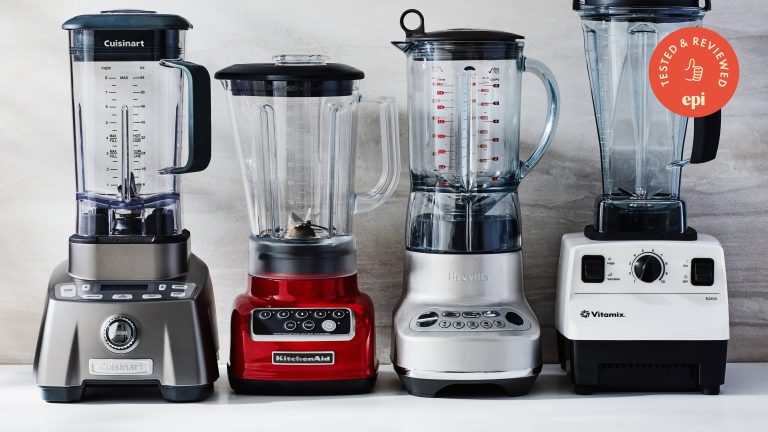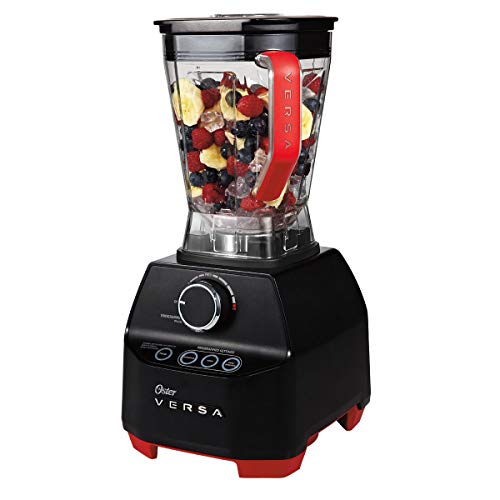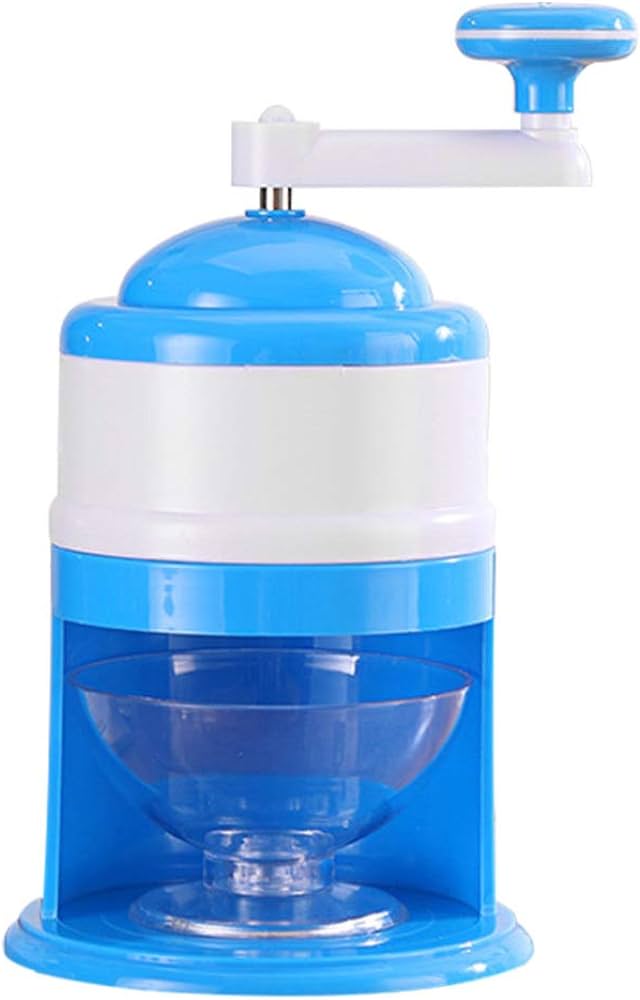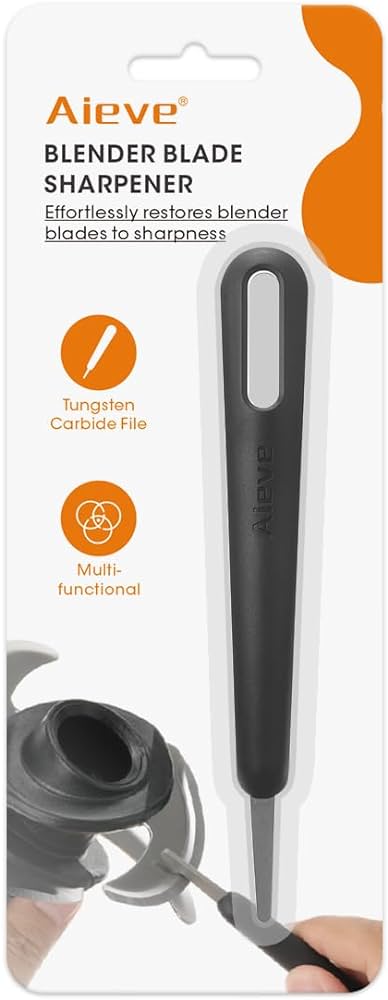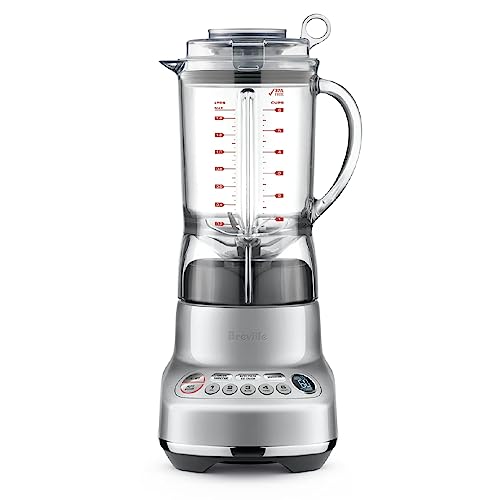How Fast Do Blenders Spin: Unleashing Speed Secrets!
Blenders can reach speeds of 20,000 to 30,000 RPM. High-performance models may exceed 30,000 RPM.
Blenders are versatile kitchen appliances that cater to a myriad of culinary needs, from whipping up smoothies to grinding spices. They work by rapidly rotating blades to mix, puree, or emulsify food ingredients. The high speeds at which blenders operate create the necessary force to blend ingredients to a smooth consistency.
The capability to adjust speed allows for control over the texture, ensuring that whether you’re making nut butter or a delicate soup, the outcome is perfect. Reliable and efficient, a blender’s speed is a testament to its power to transform whole ingredients into culinary creations. Safety features often accompany these speeds to ensure that kitchen adventures remain accident-free.
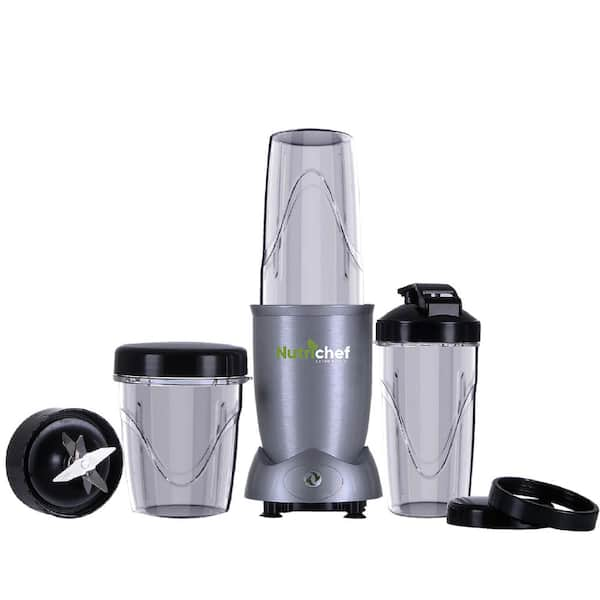
Credit: www.homedepot.com
Breaking Down Blender Speed
Wondering how fast your kitchen blender spins? The speed of a blender is essential for creating smooth shakes, icy cocktails, and blended soups. Let’s dive deep into the rates at which these kitchen workhorses operate. Understanding the revolutions per minute (RPM) helps in selecting the perfect blender for your cooking needs.
Typical Rpm Ranges For Home Blenders
The speed of a blender is measured in RPM. This abbreviation stands for “revolutions per minute”. It tells us how many times the blades spin around in one minute. Most home blenders operate at a wide range of speeds.
| Blender Type | Low-end RPM | High-end RPM |
|---|---|---|
| Basic Blenders | 3,000 | 7,000 |
| Advanced Blenders | 7,000 | 20,000 |
| Professional Blenders | 20,000 | 30,000+ |
Low-end blenders start around 3,000 RPM. They work well for simple tasks. High-performance blenders can exceed 30,000 RPM. They handle tough ingredients with ease.
Comparing High-performance To Standard Blenders
- Power: High-performance blenders pack more power. Standard models are less powerful.
- Speed: High-performance units reach greater speeds. This results in finer textures.
- Versatility: With increased speed, high-performance blenders tackle a broader range of tasks.
- Cooking Tasks: Chop, grind, and liquefy easily with more speed and power. Standard blenders may struggle with such versatility.
Both types have their place in a kitchen. Choose based on your cooking style and needs. High-RPM blenders are great for enthusiasts and professionals. Casual users may find standard blenders sufficient.

Credit: www.amazon.com
Engineering Behind Blender Speed
Ever wonder why blenders can turn fruits into smoothies so quickly? It’s all about the engineering inside. Let’s dive into what makes blenders whirl at impressive speeds and understand how they do their magic!
Motor Power And Blade Design
The heart of a blender is its motor. Blender motors vary in power, typically measured in watts. Higher wattage means more power and faster blade rotation. The motor’s design determines its efficiency and speed capabilities. It’s not just about the motor, though. Blades work with the motor. Their design matters too.
- Blade Size: Larger blades require more power to spin fast.
- Blade Angle: Angles set the cutting and mixing action.
- Number of Blades: More blades can mean finer blending.
Manufacturers optimize motor and blade design to ensure peak performance and quick blending.
Influence Of Pitch And Sharpness On Rpm
How does blade pitch and sharpness affect speed? Think of pitch as the angle of attack for each blade. A steeper pitch can move ingredients more aggressively. It can lead to faster spinning—measured in revolutions per minute (RPM).
| Blade Pitch | Impact on Ingredients | Effect on RPM |
|---|---|---|
| Steep | Aggressive movement | Increase |
| Shallow | Gentle movement | Decrease |
Sharpness is also key. Sharper blades mean quick and efficient cuts. Dull blades can’t slice through items quickly, slowing down the RPM. Keeping your blender’s blades sharp is crucial for fast and effective blending.
Measuring Blender Performance
Blenders whirl up smoothies and sauces in seconds. To understand their efficiency, we measure their speed. Speed tells us how fast a blender can mix ingredients. We look at two factors: revolutions per minute (RPM) and g-force. These show us how powerful and effective blenders are in the kitchen.
Understanding Rpm And G-force
RPM stands for Revolutions Per Minute. It means how many times the blades spin around in a minute. A higher RPM means the blender can blend faster. But speed is not all. We also need to talk about g-force.
G-force relates to the power a blender generates. When blades spin fast, they create centrifugal force. This force pulls ingredients into the blades. It helps turn solids into liquids quickly. So, more g-force means a more powerful blender.
Let’s put this into perspective with a table:
| RPM Range | Typical Uses | G-force Comparison |
|---|---|---|
| 1,000 – 15,000 RPM | Basic blending | Low to Moderate |
| 16,000 – 30,000 RPM | High-power blending | High |
Tools For Monitoring Blender Speed
To check blender speed, you can use different tools. Here’s a list of what you might need:
- Tachometer: Measures RPM. Some stick to the blender jar, reading blade speed.
- Smart blenders: These come with built-in displays showing RPM.
- Mobile apps: Some apps can estimate RPM using sound.
Remember, while RPM and g-force matter, so do other things. Consider the blade design and the motor’s wattage. These things also determine how well your blender works.
The Impact Of Speed On Blending Quality
Understanding the impact of speed on blending quality is essential for anyone looking to create perfect smoothies, sauces, or soups. Blenders spin at varying rates, measured in revolutions per minute (RPM). The right speed helps different ingredients mix well and achieve the desired texture. High speeds break down solids quickly, while lower speeds might be sufficient for softer ingredients. Each blender comes with its unique capabilities, and using the correct settings can be the difference between an okay result and a culinary masterpiece.
Speed Settings For Different Food Textures
Blenders offer diverse speed settings catering to a wide range of food textures. Using the right setting for each food type ensures optimal results. Here’s a quick guide:
- Liquid Purées: High-speed settings achieve silky smooth textures.
- Chopped Vegetables: Medium to high speeds are ideal for fine dicing.
- Nut Butters: Low and gradual speed increases prevent overheating.
- Frozen Desserts: High speeds crush ice and frozen fruit effectively.
The Relationship Between Speed And Blending Uniformity
A blender’s speed significantly affects blending uniformity. Understanding this relationship is crucial:
- Low speeds: Often produce chunkier textures; great for salsa or chunky soups.
- Medium speeds: Help mix ingredients evenly without overly pureeing them.
- High speeds: Necessary for completely smooth blends, like smoothies or batters.
Blender design also plays a role in how ingredients blend at different speeds. Blades, pitcher shape, and motor strength contribute to blending efficiency and quality. Using the right speed setting maximizes the equipment’s potential to deliver uniform, texturally appealing results.
Extreme Speed: Commercial And Industrial Blenders
Let’s take a deep dive into the world of high-velocity kitchen wizards. Commercial and industrial blenders are the superheroes of the blending world. These powerful machines cut through the toughest ingredients at mind-boggling speeds.
The Need For Greater Speed In Professional Settings
Professional settings demand efficiency and power.
- Time is money in a busy kitchen.
- Fast blenders mean quick service.
- They handle tough ingredients with ease.
From smoothies to soups, speed ensures consistency and quality.
High-speed Innovations In Blender Technology
The latest blenders boast incredible RPMs.
| Blender Type | RPM Range |
|---|---|
| Standard Commercial | 20,000 to 30,000 |
| Advanced Industrial | 30,000 to 45,000+ |
Sharper blades and powerful motors lead this evolution.
They result in finer blends and faster execution.
In the culinary battlefield, every second saved is a victory.
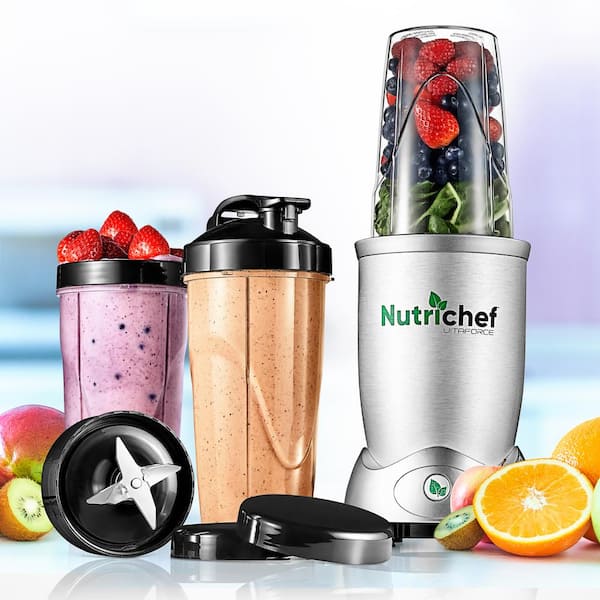
Credit: www.homedepot.com
Safety And Efficiency Concerns
Blenders rotate at high speeds, a feature that makes them incredibly efficient at pureeing, liquefying, and mixing various ingredients. But with high velocity comes greater responsibility for safety and efficiency. Users must understand the risks involved and how to maintain energy-conscious blending practices.
Risks Associated With High-speed Blending
Blenders can spin as fast as 20,000 to 30,000 revolutions per minute (RPM). While beneficial for smooth consistency, this speed can pose risks:
- Flying debris from the blender if the lid isn’t secure
- Overheating motors which can cause damage or injury
- Wear and tear on blades, potentially leading to premature appliance failure
- Increased risk of blunt force injury during cleaning or misuse
Users should ensure the blender is off before removing the lid and keep hands away while it’s operating. Use features like guarded blades and safety locks to prevent accidents.
Energy Consumption And Sustainability Of Fast Blenders
High-speed blenders often consume more energy. This impacts not just utility bills but also environmental footprints. When choosing a blender, consider:
- Energy efficiency ratings (like ENERGY STAR)
- Eco-friendly materials used in construction
- Blender’s power usage versus performance
- Availability of replacement parts to extend life
Practice energy-saving habits by blending large batches and using lower speed settings when possible. Energy-conscious design and usage make for sustainable blending over time.
Exploring Blender Speed Limits
Imagine your blender as a whirlwind, spinning ingredients into delicious smoothies. Blenders vary in speed, affecting how well they mix. Let’s dive into their speed limits.
Theoretical Maximums For Blender Rpm
Blenders spin fast. They turn food into liquid quickly. But, how fast can they spin?
The speed of a blender is measured in revolutions per minute (RPM). Home models often reach 20,000 to 30,000 RPM. Professional ones can spin over 38,000 RPM. Some top-end models claim they can approach 45,000 RPM.
Here are key factors affecting blender RPM:
- Motor strength: Powerful motors spin blades faster.
- Blade design: Blades cut and mix differently based on shape.
- Overall build: Sturdy blenders handle higher speeds.
Yet, high RPM isn’t always the goal. Blenders must balance speed with blending quality and safety. They need to prevent overheating and wear over time.
Future Developments In Blender Speed Capabilities
Tech advances constantly. Blenders get better and faster. Future blenders might have:
- New motor tech: Motors could become more efficient, boosting speed.
- Smart speed: Blenders might self-adjust speed for the best mix.
- Materials upgrade: Stronger materials mean blades can spin faster.
Imagine a blender that knows what you’re making. It could pick the right speed for a perfect texture. That’s the future.
Researchers are working hard to make this happen. Blender speeds might not just increase. The real aim is smart speed control for ultimate blending.
Frequently Asked Questions Of How Fast Do Blenders Spin
What Is The Average Rpm Of Blenders?
Blenders typically operate at speeds anywhere from 3,000 to 28,000 revolutions per minute (RPM). The wide range allows for various blending tasks, from chopping to liquefying.
Can Blenders Reach High-velocity Speeds?
Yes, high-performance blenders can reach speeds that create enough friction to heat soups. These speeds exceed 20,000 RPM, optimizing food processing tasks.
How Do Speed Settings Affect Blender Performance?
Blender speed settings control the blade’s RPM, which affects texture and blending efficiency. Low speeds are for chopping, while high speeds create smooth, even mixtures.
Do All Blenders Spin At The Same Rate?
No, blenders differ in spinning rates based on make, model, and functionality. Personal blenders typically have lower RPMs, while commercial ones reach higher speeds for fine textures.
Conclusion
Understanding blender speeds unlocks the mystery behind those perfectly smooth creations, from hearty soups to refreshing smoothies. Blenders whirl at varying velocities, with some touching a dizzying 30,000 RPM. Selecting the right speed can transform ingredients into culinary delights, making your kitchen adventures both efficient and enjoyable.
Embrace the power of your blender and let it spin your meals into something special.


